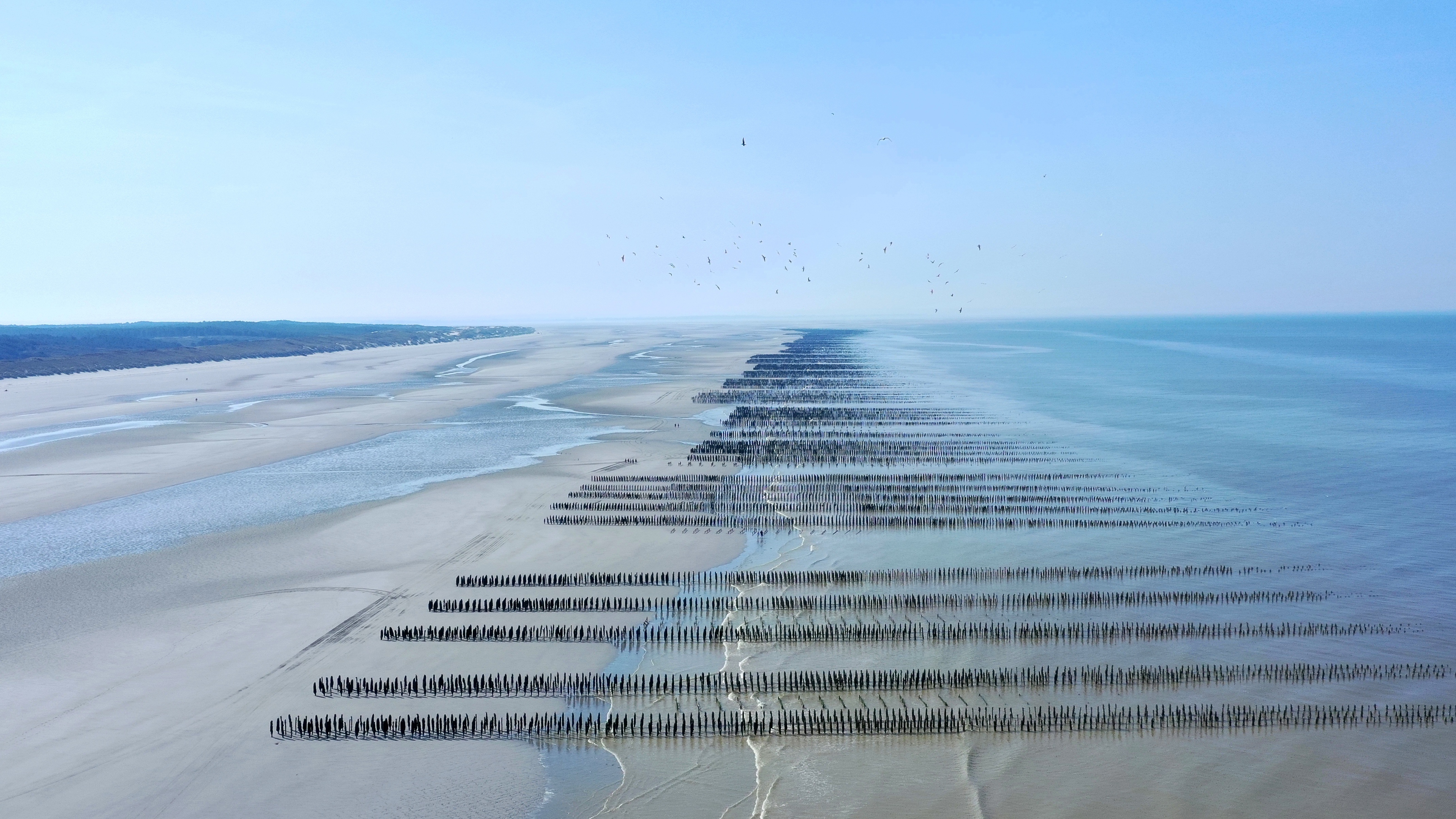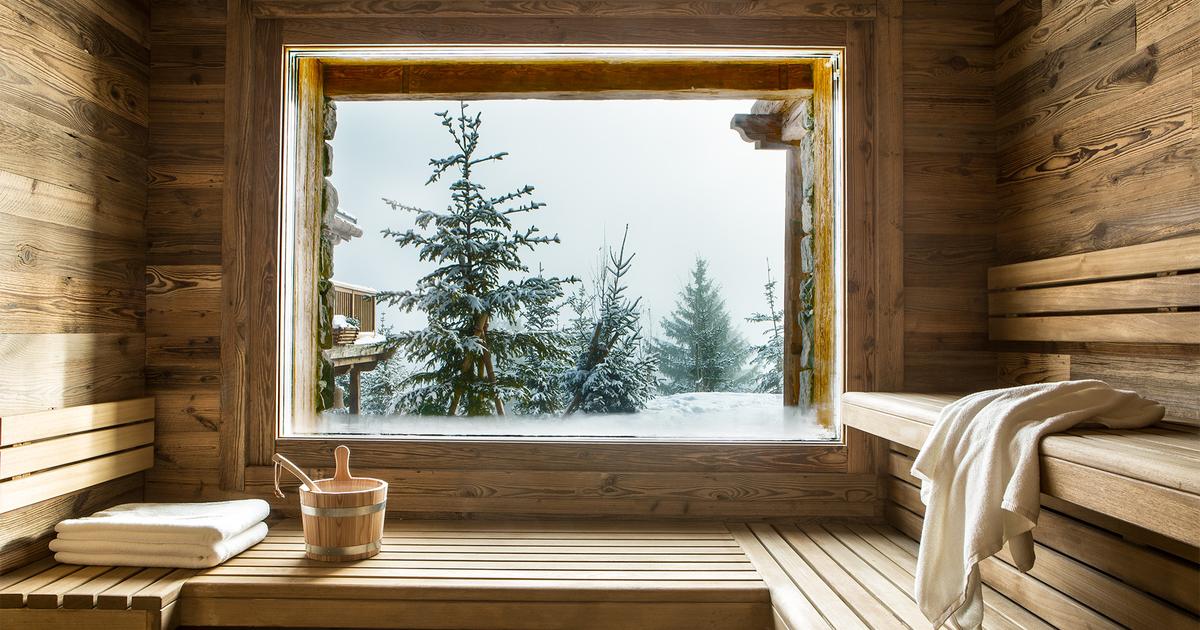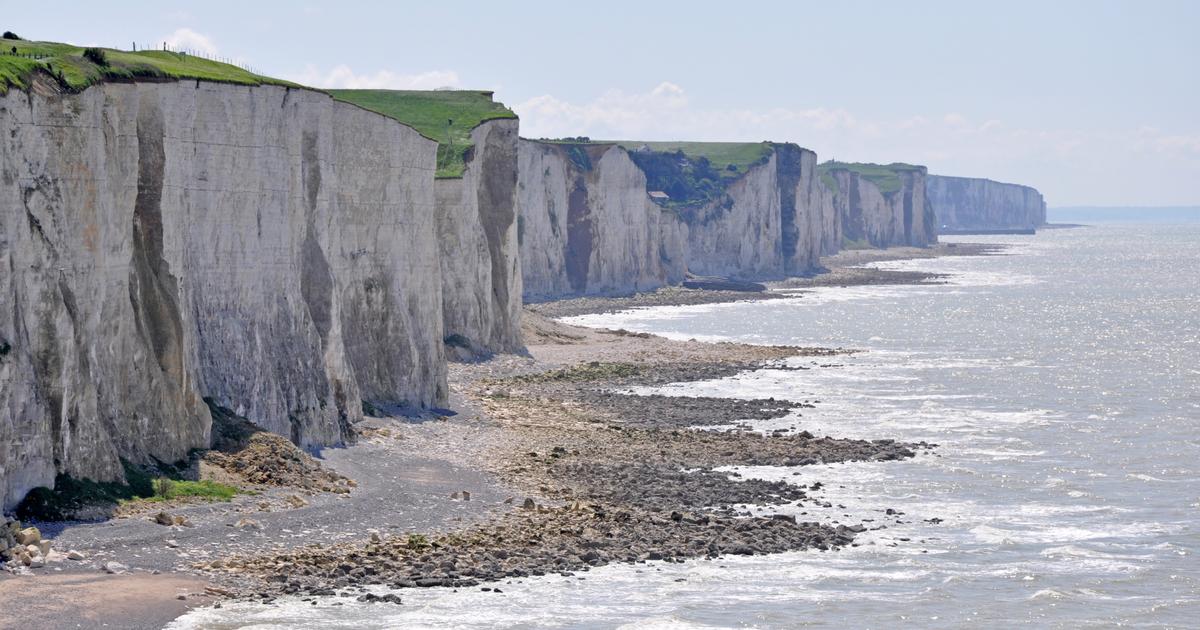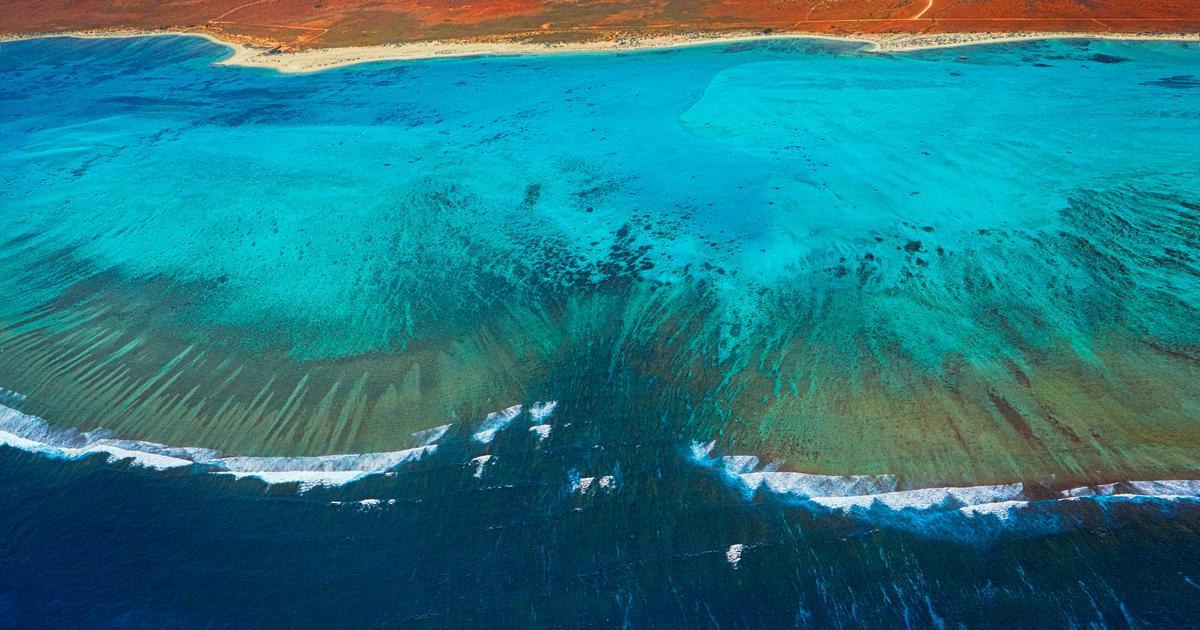Somme bay (Somme)
Dunes capped with herbs which undulate under an immense sky ... Sandy and wild expanses that you only tread at low tide ... Mollières (Picard term for salt meadows) crossed by a thousand rivers ... Between Dieppe and Boulogne-sur-Mer, the Somme estuary draws a triangle of 70 km², which is regularly hoisted on the podium of the most beautiful bays in the world. The ocean currents endlessly shape and reshape the lines of these landscapes of water, grass and sand, which are preferably explored on foot, a pair of binoculars in hand. At the heart of the National Natural Reserve of the Baie de Somme, the Marquenterre Park serves as a refuge for thousands of migratory birds: stork, greylag goose, osprey, common shelduck ... Some make a stop here between Scandinavia and Mauritania. Dreaming of these distant lands on the sandbanks, mud flats and salt meadows is part of the experience of a stroll in the Bay of Somme. Another exotic encounter, that of the seals that can be seen from the quays of Crotoy, Saint-Valéry and Hourdel. And always this "flat and humid desert where the sea, by withdrawing, has left oblong lakes, round puddles, ruddy canals where the horizontal rays bathe" (Colette).
The Opal Coast (Pas-de-Calais, Nord)
Coastline of the Opal Coast south of Cap Blanc Nez. © indorienta - stock.adobe.com
Very north of France, between Calais and Boulogne-sur-Mer, the Opal Coast points the tip of his nose or rather his nose, because they are two: Cape Blanc-Nez and Cape Gris-Nez . Classified as a Grand Site of France in 2011, the Deux-Caps site offers walkers dazzling natural and wild landscapes. Twenty-three kilometers of coast where a wind of freedom blows, under skies all the more sublime that they are tormented. Lead gray is particularly suited to apple green pastures near Cape Blanc-Nez. Year after year, the Channel nibbles on this 133m high chalk cliff. When the northwesterly winds clear the sky, you can make out the white line of the cliffs of Dover (England), more than 30 kilometers away. Further south, Cape Gris-Nez marks the border between the English Channel and the North Sea, which stretches as far as the eye can see. To fall asleep, the Boulonnais sheep count the 600 or so boats that use the narrow strait every day. Between these two points, sand dunes, a solitary fort (Ambleteuse) and pretty coastal villages (Audresselles, Wimereux, Wissant).
The fakes of Verzy (Marne)
The fakes of Verzy, these mutant trees of the mountain of Reims © beketoff - stock.adobe.com
Verzy's scythes are real trees. Beeches called tortillards, which are called "false" (from the Latin fagus : beech) in Old French. These ancestors (some are several hundred years old) with gnarled trunks and twisted branches, form a fantastic tale setting at the top of the Montagne de Reims. We are no more twisted than these trees with tormented silhouettes, which sometimes disappear under their dome foliage. Their creeping forms take root and give birth to new trees. We think of old wizards trapped in their spells. Specialists tend to prefer a genetic particularity, due to the layering technique practiced by the botanical monks of the Abbey of Saint-Basle, founded in the forest in the 7th century. The autumn and winter mists add mystery to this leafy and silent kingdom. Barriers surround some of the most beautiful scythes, which we discover along a forest path laid out by the Reims Mountain Regional Natural Park.
Mont Beuvray, Morvan (Saône-et-Loire)
Mont Beuvray forest in Saint-Léger-sous-Beuvray. Jorge Alves - stock.adobe.com
At the edge of the Morvan, Mont Beuvray hoists its 821 meters of granite above the plain of Autun. From the clear summit of the forest right-of-way (we speak of "stubble"), the view leads in good weather to the Jura, even to the Alps. However, it is not the panorama that captivates. There is a scent of eternity here ... The wind of history has blown over these heights: it is here that the Gallic tribes brought Vercingétorix to the head of their armies. It is on Mont Beuvray that the Gallic tribe of the Eduens built their capital, the Oppidum of Bibracte. Some vestiges of this hairy Gaul remain. In the tranquility of the end of the day, we almost expect to meet a druid among the beech and multi-hundred-year-old oak forest. Some of these trees twist strangely: we call "tails" those branches that have been intertwined and tilted to form pleated hedges. It is our turn to bow down to these witnesses from time immemorial.
The crest road, Vosges mountains (Vosges)
Lac des Truites, walk on the peaks of the Vosges. montembaut - stock.adobe.com
From Cernay to Sainte-Marie-aux-Mines, the road twists to follow the crest line that separates Alsace from Lorraine. The summits rounded in “balloons” follow one another in a landscape of high stubble and fragmented forests of lakes. Cars and motorcycles regularly attend this panoramic bitumen ribbon. Fortunately, you can easily get away from their unwanted humming. The adorable (and unknown) lake of Fischboedle, on the Alsatian side, makes a great excursion destination. We picnic in front of the surprising scree which comes to throw itself into the dark water, where the bouquets of beech, spruce and birch are reflected. In the fall, Lac des Perches seduces with its green water, but we prefer Lac des Truites, which the Indian summer transforms into small Vosgean Canada. At the end of the day, we will take refuge in the heights of the ridges, where the chamois roam. The sun sets on the blue line of the Vosges dear to Jules Ferry. It is a piece of France that one contemplates in the calm of the evening.
Refuge du Sotré. In the heart of the Vosges mountains, this friendly, multi-award-winning mountain inn organizes excellent nature excursions. Phone. : 03 29 22 13 97 and www.refugedusotre.com .
The remote of Baume-les-Messieurs (Jura)
Village of Baume-les-Messieurs. © Pictures news - stock.adobe.com
In the Jura, advancing in a remote area does not mean standing still. The remote, which is the pride of the department, are long valleys that sink inside a limestone plateau to abruptly end in a dead end. That of Baume-les-Messieurs is without doubt the most beautiful, in any case the most spectacular. Carpet in the hollow of the circus covered with forests, the village of Baume-les-Messieurs and its imperial abbey (as decided by the emperor Frédéric Barberousse in the 12th century) bathe in an atmosphere of a forgotten valley. Caves and waterfalls adorn this site which seems too good to be true. Far from oppressing, the closed valley seems to protect those who venture there. The same impression strikes you at the lesser-known Ladoye circus, 10 kilometers away. A part of the world surrounded by limestone cliffs, where only the imagination can escape. It is good to be at the bottom of the dead end…
The Square du Vert-Galant, Paris (Seine)
The Square du Vert-Galant is at the separation of the Seine around the Ile de la Cité at the Pont Neuf in Paris. Aquaphoto - stock.adobe.com
It is the eye of the cyclone, a parenthesis of calm and greenery within the Parisian frenzy. At the tip of the Île de la Cité, like a figurehead hanging from the Pont Neuf, this microscopic square is the refuge for lovers and strollers, white-collar workers on a snack break and groups of friends who are too happy to picnic by the Seine. On this peninsula, we arbitrate the match between the Louvre and the Institut de France, the right bank and the left bank. In summer, at aperitif time, the square and the quays that surround it are crowded: let's forget. But during the day, you can lie down, alone, under the weeping willow, at the end of the square. The barges glide over the water, the ducks waddle, an onlooker takes a nap, a student student, in the distance you can see the amateur painters of the Pont des Arts ... Nothing has changed here since the time when Robert Doisneau and Henri Cartier-Bresson came to photograph the Parisians in the act of idleness.
Vézelay (Yonne)
The basilica of Vézelay. © Sylvain Cordier - stock.adobe.com
For Maurice Druon, it is "the eternal hill". For Jules Roy, it is "mad love": "Who warms himself to his flames will always be cold elsewhere. Who once contemplated this city and its ramparts can no longer do without it, who slept there dreams only of dying there ”. A magnetism, a fascination operates in Vézelay, a village clinging to its rocky outcrop from which one spies on the forests of the Morvan. At the top of the hill, the basilica, which houses the relics of Saint Mary Magdalene, is undoubtedly at the origin of the almost mystical shock that we feel here. At the summer solstice, at noon, nine luminous puddles line the central nave with the precision desired by the builders in the 12th century. Pilgrims on the way to Santiago de Compostela warm their faith there. The others listen to the dialogue between stone and light, symbolizing the exchange between man and the divine. Romain Rolland, Jules Roy, Georges Bataille, Le Corbusier, François Mitterrand and many others were drawn here by the vibrancy of the place. Your turn…
The Avesnois Regional Natural Park (North)
Windmill of Maroilles. © JOVENIAUX - stock.adobe.com
Between its slag heaps and its brick chimneys, the North has preserved a unique natural territory, made up of hedgerows and forests, orchards and meandering rivers. The Avesnois Regional Natural Park protects 125,000 hectares of what is curiously nicknamed "the little Switzerland of the North" - a funny Switzerland without a summit, where the maroilles would replace the gruyère. The countryside remains no less cheerful and hilly, with its hedges planted with hawthorn and tadpole oaks. We walk the fens between two villages of blue stone, we wander along streams with crystal clear water, we sink into the depths of forests that already existed in the time of our ancestors the Gauls. Robert-Louis Stevenson, who went down the northern rivers by canoe, has fond memories of it: "the breath of the forest of Mormal, brought down to us on this rainy afternoon, was no less fragrant than the delicate scent of the dog rose ”.
The Hedgehog waterfalls (Jura)
The Great Jump, one of the Hedgehog waterfalls. © GoldenEyes71 - stock.adobe.com
What water! What water! In the lake region, water multiplies into mirrors of still water. In this aquatic kingdom, the Hedgehog waterfalls play spoilsports. In a hurry to reach the Ain, the Hérisson river descends 300 meters in elevation in a series of 31 jumps and seven waterfalls. A 3.7-kilometer route allows you to approach these downpours of swirling water. The Éventail waterfall takes the form of a majestic 65-meter-high liquid veil, foaming the mossy rocks in steps. Behind the Big jump, a unique 60-meter drop, there is a cave where one takes refuge, soaked. Higher, still more jumps, and even a swimming pool, the Gour Bleu. In summer, the greedy droplet crowd throngs the Hedgehog. Let us prefer the late season, when the more abundant water makes the site a vast open-air fountain.
3 hour hike (7.4 km round trip). Indispensable walking shoes.








/cloudfront-eu-central-1.images.arcpublishing.com/prisa/GOC4OMOSPRGHBC3AGTSKUSEWDY.jpg)
/cloudfront-eu-central-1.images.arcpublishing.com/prisa/CY2A26MEDVGSFEWPX5DBVG5BFQ.jpg)